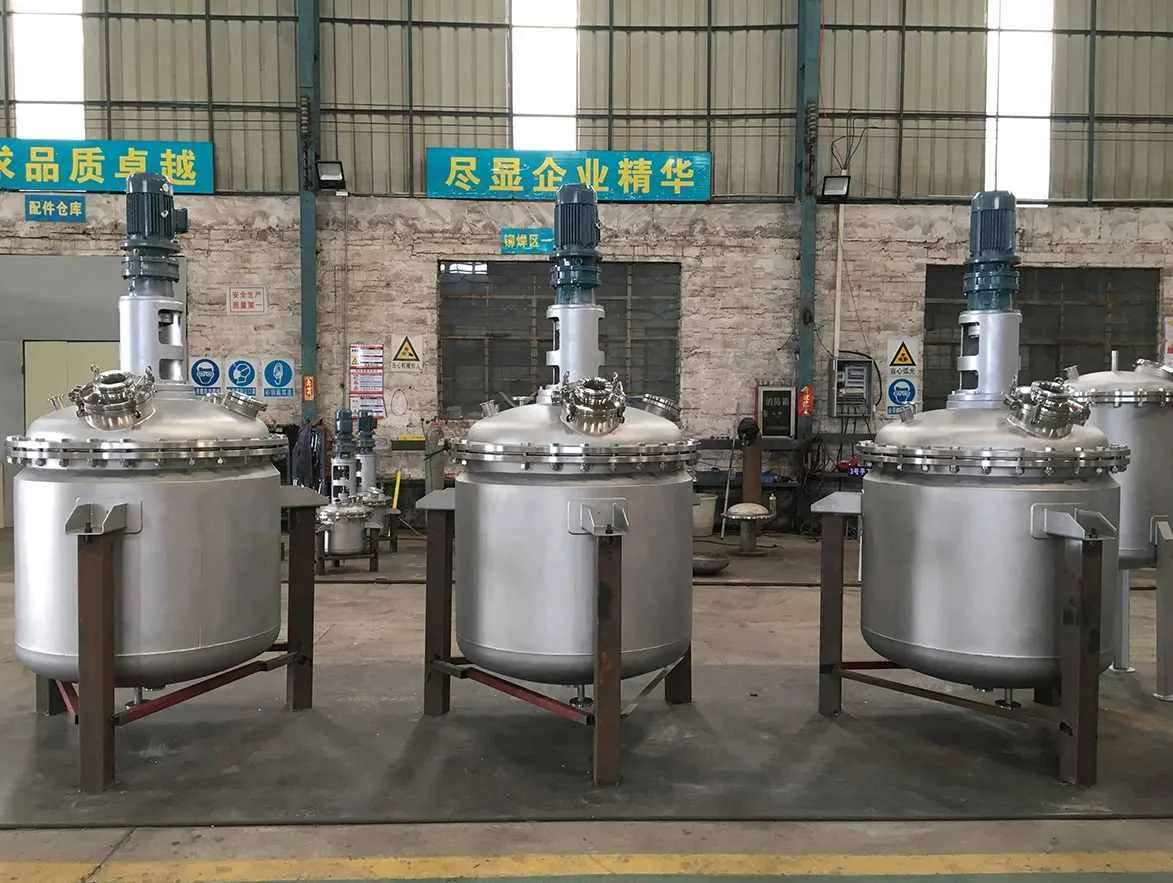Categories
Tags
Archives
Safety Considerations When Operating a Reaction Kettle
-
Posted by hui hui - Filed in Arts & Culture - 377 views
The reaction kettle, also known as a reactor, is an essential piece of equipment in the chemical production industry. It is designed to facilitate various chemical reactions by combining liquid and solid materials under controlled conditions. While reaction kettles are incredibly effective for producing a wide range of products—from pharmaceuticals to polymers—their operation involves certain risks that must be managed to ensure safety. At Shuochen, we prioritize the safety of our equipment and operators. In this blog, we will discuss key safety considerations when operating a reaction kettle.

1. Understanding the Equipment
Before operating a reaction kettle, it is crucial to have a thorough understanding of its components and functions. A typical reaction kettle consists of:
- Kettle Body: The main chamber where reactions occur.
- Mixing Device: Ensures even mixing of materials.
- Heating and Cooling Systems: Regulate temperature during reactions.
- Sealing Devices: Prevent leaks and maintain pressure.
Familiarizing yourself with these components helps in identifying potential hazards and understanding how to operate the equipment safely.
2. Proper Training
All personnel involved in operating a reaction kettle should receive comprehensive training. This training should cover:
- Operating Procedures: Step-by-step guidelines on how to use the kettle safely.
- Emergency Protocols: What to do in case of an accident or malfunction.
- Chemical Handling: Safe practices for dealing with hazardous materials.
Training ensures that operators are equipped to handle the equipment responsibly and can respond effectively in emergency situations.
3. Personal Protective Equipment (PPE)
Wearing appropriate personal protective equipment is essential when operating a reaction kettle. Operators should be equipped with:
- Safety Goggles: To protect eyes from splashes or debris.
- Gloves: Chemical-resistant gloves to prevent skin contact with hazardous substances.
- Lab Coats or Coveralls: To protect skin and clothing from spills.
- Respirators: If there is a risk of inhaling harmful vapors.
Using PPE significantly reduces the risk of injury during operation.
4. Regular Maintenance and Inspections
Routine maintenance and inspections are vital for ensuring the safe operation of reaction kettles. Operators should:
- Inspect Seals and Gaskets: Regularly check for wear and tear that could lead to leaks.
- Calibrate Temperature Controls: Ensure that heating and cooling systems function correctly.
- Test Safety Devices: Verify that pressure relief valves and emergency shut-off systems are operational.
By maintaining the equipment properly, you can prevent accidents caused by mechanical failures.
5. Monitoring Reaction Conditions
During operation, it is crucial to monitor the conditions within the reaction kettle closely. Key parameters include:
- Temperature: Ensure that the temperature remains within safe limits to prevent overheating or thermal runaway.
- Pressure: Monitor pressure levels to avoid overpressure situations that could lead to explosions.
- Stirring Speed: Adjust stirring speeds as necessary to maintain proper mixing without causing excessive agitation.
Using automated monitoring systems can help maintain these parameters effectively.
6. Chemical Compatibility
Before starting any reaction, verify the compatibility of all materials involved. This includes:
- Reagents: Ensure that chemicals do not react violently with each other.
- Materials of Construction: Confirm that the kettle's materials can withstand the chemicals being used without corroding or degrading.
Understanding chemical compatibility helps prevent dangerous reactions that could compromise safety.
7. Emergency Preparedness
Having an emergency plan in place is critical when working with reaction kettles. This plan should include:
- Emergency Exits: Clearly marked exits for quick evacuation in case of an incident.
- Fire Extinguishers: Easily accessible fire extinguishers appropriate for chemical fires.
- First Aid Kits: Available first aid supplies for treating minor injuries on-site.
Regular drills can ensure that all personnel know their roles in an emergency situation.
8. Safe Disposal Practices
After completing a reaction, proper disposal of residual chemicals is essential for safety and environmental protection. Operators should:
- Follow Regulatory Guidelines: Adhere to local regulations regarding hazardous waste disposal.
- Label Waste Containers: Clearly label containers with their contents to avoid accidental exposure or mishandling.
- Use Appropriate Disposal Methods: Ensure that waste is disposed of using approved methods, such as chemical neutralization or incineration.
Implementing safe disposal practices minimizes risks associated with leftover chemicals.
Conclusion
Operating a reaction kettle involves inherent risks, but with proper precautions, these risks can be effectively managed. By understanding the equipment, receiving adequate training, wearing appropriate PPE, conducting regular maintenance, monitoring conditions closely, ensuring chemical compatibility, preparing for emergencies, and following safe disposal practices, operators can create a safer working environment.
At Shuochen, we are committed to providing high-quality reaction kettles designed with safety features that meet industry standards. Our goal is to support your operations while prioritizing safety at every step. If you have any questions about our products or need assistance in selecting the right equipment for your needs, please feel free to reach out! Together, we can ensure safe and efficient chemical processing in your facility.
